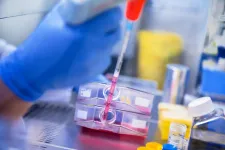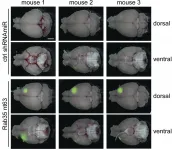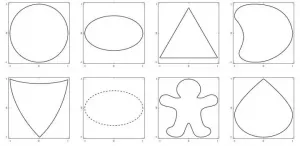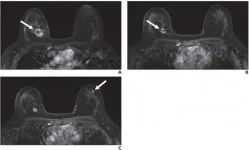Faeces and algorithms: Artificial Intelligence to map our intestinal bacteria
2021-01-14
(Press-News.org) Both past and present-day scientists have suspected the intestines of playing a role in various diseases. Present-day studies focus on the intestinal flora's role in physical diseases such as diabetes and overweight, while others seek to establish a connection between the intestinal flora and e.g. autism, schizophrenia and depression. But even modern-day scientists have difficulties studying the around 500-1000 different species among the approx. 100 billion active bacteria in our intestines.
Therefore, researchers from the University of Copenhagen have developed a ground-breaking technique that can help us unravel some of the mysteries of the human intestinal bacteria. Aside from working together with the immune system in a vital cooperation, imbalance in the intestinal bacteria composition is the cause of chronic disease of the alimentary tract of which 50.000 Danes suffer.
'In recent years we have discovered that bacteria have a great impact on the body. A lot of research is being done within this field, but we still have not identified all the bacteria found in and on the human body. Knowledge of the bacteria is vital if we are to understand what is going on. That is where our technique can make a difference', says Associate Professor Simon Rasmussen, who together with his team of researchers at the Novo Nordisk Foundation Center for Protein Research is responsible for the new study, the results of which have just been published in Nature Biotechnology.
'The presence of bacteria is vital to the immune system, and this is true not least of intestinal bacteria. But the problem is that it is very difficult to study intestinal bacteria in their natural environment, which they often deeply depend on in order to survive. Now, we have developed a method that uses artificial intelligence to help us identify the bacteria found in and on the human body. This will give us an idea of how they work together and what happens when we fall ill', he explains.
Faeces are key to understanding
Instead of studying the bacteria inside the intestines, the researchers have analysed the intestines' ultimate by-product: faeces.
Faeces contain remains of the bacteria that have helped metabolise the food in the stomach and intestines and thus offer unique insight into an otherwise inaccessible environment. So far technology has only allowed researchers to read fragments of the bacteria's' DNA - which is equivalent to doing a puzzle with only a fraction of the pieces.
Therefore, Simon Rasmussen and his team of researchers have developed an algorithm that uses artificial intelligence to complete the DNA strings of bacteria in faeces. And now researchers from all over the world can help finish the puzzle.
'One gram of faeces contains around a billion bacteria of 500-1000 different kinds. If we are able to reconstruct their DNA, it will give us an idea of the types of bacteria we are dealing with, what they are capable of and what they actually do. It is not the complete picture, but it is a huge step forward. And our algorithm is available to other researcher and free to use', he says.
Identifies patterns in different types of data
But the method is not limited to intestinal bacteria, Simon Rasmussen explains. The ability of artificial intelligence to analyse the bacterial content of very small samples may also be used to study other substances than faeces.
For example, if you want to know how polluted soil has affected the microorganisms, you could use the new method to analyse a soil sample from the area in question. The same applies to lakes and watercourses located close to a factory or similar. Or, as Simon Rasmussen points out, if there are bacteria present, they can be now be identified.
'But the algorithm can not only be used to study bacteria. You could also use it to analyse health data, for example. Say that you are working on increasing our knowledge of specific diseases. To help us do so we can collect an amount of information about the patient group, such as knowledge of their genetics, protein composition, substances in the blood and data from electronic records. Our artificial intelligence can then analyse these very different sets of data and identify patterns and connections. It holds great potential', Simon Rasmussen explains.
Aside from the article on the algorithm, the team has several other studies in the pipeline demonstrating the use of their technology.
INFORMATION:
ELSE PRESS RELEASES FROM THIS DATE:
2021-01-14
Roughly 8,200 years ago, the island of Yuzhniy Oleniy Ostrov in Lake Onega in the Republic of Karelia, Russia, housed a large burial ground where men, women and children of varying ages were buried. Many of the graves contain an abundance of objects and red ochre, signifying the wish to ensure the comfort of the buried also after death. Pendants made of elk incisors were apparently attached to clothing and accessories, such as dresses, coats, cloaks, headdresses and belts. Although no clothing material has been preserved, the location of the elk teeth sheds light on the possible type of these outfits.
A people of grooved elk tooth pendants
A study headed by archaeologist Kristiina Mannermaa, University of Helsinki, aimed to determine who ...
2021-01-14
Bacteria are likely triggering greater melting on the Greenland ice sheet, possibly increasing the island's contribution to sea-level rise, according to Rutgers scientists.
That's because the microbes cause sunlight-absorbing sediment to clump together and accumulate in the meltwater streams, according to a Rutgers-led study - the first of its kind - in the journal Geophysical Research Letters. The findings can be incorporated in climate models, leading to more accurate predictions of melting, scientists say.
"These streams can be seen all over Greenland ...
2021-01-14
In patients with bladder cancer, chemotherapy effectiveness is partially determined by the body's immune system response to the malignancy. This is the conclusion of research conducted by a team of scientists from Charité - Universitätsmedizin Berlin and the Berlin Institute of Health. The findings, which have been published in Science Translational Medicine*, can be used to predict treatment success and may increase survival in patients with bladder cancer.
Bladder cancer is one of the ten most common types of cancer in Germany, and one of the five most common cancers in men. Nationwide, the disease affects approximately 30,000 people a year. The risk of the cancer ...
2021-01-14
TAMPA, Fla. -- The hallmarks of cancer include rapid cell reproduction and metabolic activity. But these processes also lead to increased cellular stress and oxidation, and the risk of cell death. To circumvent these negative consequences of supercharged growth, cancer cells stimulate pathways to reduce oxidative stress and avoid cell death. In an article published in Cell Metabolism, Moffitt Cancer Center researchers report on a newly discovered biochemical pathway that protects cells from a type of cell death called ferroptosis.
Ferroptosis is a specialized type of cell death that is caused ...
2021-01-14
Scientists at the Walter Reed Army Institute for Research have shown that microRNA biomarkers related to Alzheimer's disease play a role in brain damage caused by traumatic brain injury.
TBI or brain trauma results from blows to the head, leading to chronic disruption of the brain and a cascade of long-term health conditions. Patients who suffer from TBI are at much higher risk of developing neurodegenerative disease or dementia, particularly Alzheimer's disease. The mechanism behind this relationship remains understudied, making the development effective therapeutics challenging.
MiRNAs are small pieces of genetic material that play a critical role in normal gene expression. Yet, studies have also linked abnormal miRNA levels, or dysregulation, to a range of diseases including neurodegenerative ...
2021-01-14
Recently, the research team led by academician GUO Guangcan from the University of Science and Technology of China of the Chinese Academy of Sciences has made security analysis and improvement of source independent quantum random number generators with imperfect devices.
By studying the actual characteristics of the measurement devices of the source-independent quantum random number generation, the researchers pointed out that the security issues were caused by afterpulse, detection efficiency mismatching, poor sensitivity to photon number distribution ...
2021-01-14
Researchers at McGill University have identified a new cellular pathway that limits the growth and spread of brain tumors by controlling the recycling of cell surface receptor proteins. The study, which will be published January 14 in the Journal of Cell Biology (JCB), suggests that the pathway, which involves a protein called Rab35, is defective in many patients with glioblastoma and that restoring Rab35's activity could be a new therapeutic strategy for this deadly form of brain cancer.
Glioblastoma is the most aggressive type of brain cancer, and because it is largely untreatable, the average patient dies within 14 months of diagnosis. Like in other cancers, the proliferation and spread of glioblastoma cells depends on various receptor proteins on the outside of the cell. The ...
2021-01-14
While humans may struggle to navigate a murky, turbid underwater environment, weakly electric fish can do so with ease. These aquatic animals are specially adapted to traverse obscured waters without relying on vision; instead, they sense their environment via electric fields. Now, researchers are attempting to adapt these electrosensing techniques to improve underwater robotics.
Scientists have spent years studying how weakly electric fish--including the knife fish and elephantnose fish--utilize electricity for navigation. These fish have specialized electric organs that discharge small voltages into the surrounding water, creating their own personal electric fields. Nearby objects cause slight disruptions to these fields, which the fish detect with sensitive organs ...
2021-01-14
There is a growing consensus among scientists as well as national and local governments representing hundreds of millions of people, that humanity faces a climate crisis that demands a crisis response. New research from the University of California San Diego explores one possible mode of response: a massively funded program to deploy direct air capture (DAC) systems that remove CO2 directly from the ambient air and sequester it safely underground.
The findings reveal such a program could reverse the rise in global temperature well before 2100, but only with immediate and sustained investments from governments and firms to scale up the new technology.
Despite the enormous undertaking explored in the study, the research also reveals the need ...
2021-01-14
Leesburg, VA, January 14, 2021--According to ARRS' American Journal of Roentgenology (AJR), new suspicious findings occurred in 5.5% of breast MRI examinations performed to monitor response to neoadjuvant therapy; none of these new lesions were malignant.
"Our findings suggest that new lesions that arise in the setting of neoadjuvant therapy are highly unlikely to represent a new site of malignancy, particularly if the index malignancy shows treatment response," wrote Donna A. Eckstein and colleagues in the department of radiology and biomedical imaging at the University of California, San Francisco.
Based on a presentation at the ARRS 2019 Annual Meeting, Honolulu, ...
LAST 30 PRESS RELEASES:
[Press-News.org] Faeces and algorithms: Artificial Intelligence to map our intestinal bacteria






